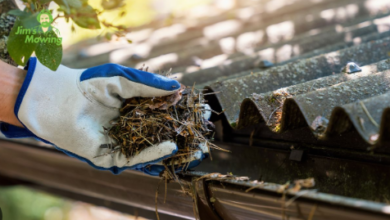Choosing Between Floating and Fixed Pond Fountains: What Suits Your Landscape Best?

Water features can turn any outdoor space into a calming, beautiful area. When it comes to ponds, decorative fountains are one of the common types of improvement that not only will beautify the water body, but they will improve pond conditions as well.
Whether a backyard pond, a commercial landscape, or a water feature for a golf course, the right type of pond fountains will have a lasting impression.
One of the biggest decisions of fountain options is whether the fountain will be floating or fixed (stationary). Both options are utilized in pond design, however, it is important to understand the differences between them, which will ultimately aid in choosing the correct option for you.
What Is a Floating Pond Fountain?
A floating pond fountain is designed in a way that it sits on the water surface from a buoyant float platform. The pump is suspended just below the water level. These fountain designs also use mooring lines or weights to hold them in a place. This allows the floating fountain to remain in a general location while floating.
Floating pond fountains are often utilized in medium to large ponds, where it is not practical to anchor a pump up off the bottom. Floating fountains are easily moved and can be repositioned, or taken out of water for maintenance. Many floating fountains are sold in kits, so that no extra plumbing is needed, where pump, nozzle, float, and mooring are included in one package.
They usually have a selection of spray patterns depending on what nozzle is being attached. This is used for esthetics, but they do help with circulation and oxygenation at the water surface.
What Is a Fixed (Stationary) Pond Fountain?
A fixed or stationary fountain is installed directly at the bottom of the pond. It requires a solid, level surface or a mounting bracket to stay in place. The fountain pump is completely submerged and remains in a fixed location, typically closer to the shore or in shallow water.
This type of fountain is more common in smaller ponds or decorative water features where a floating platform would look out of place or take up too much surface area. Fixed fountains are also a popular choice in formal landscape designs where the spray pattern needs to remain perfectly centered and aligned.
The setup may require additional components like a pump vault, tubing, or external filtration, depending on the design. These fountains are usually more permanent and may need a bit more effort to install or service.
See also: Cozy Winter Home Updates: Australian Homeware Trends
Key Differences Between Floating and Fixed Fountains
The most obvious difference lies in how they are installed. Floating fountains use buoyancy and anchoring to stay in place at the surface, while fixed fountains are rooted at the pond floor. This difference affects several aspects of performance and appearance.
Floating fountains are easier to access for maintenance, especially when debris clogs the intake or when seasonal cleaning is needed. Fixed fountains, once installed, can be more discreet but may be harder to reach without draining water or diving equipment.
In terms of esthetics, floating fountains tend to create taller, more dramatic displays because the pump is placed near the surface. Fixed fountains often produce more compact but elegant spray forms, ideal for controlled environments or smaller ponds.
Choosing Based on Pond Depth and Size
Pond depth plays a critical role in determining which type of fountain will work best. Floating fountains are ideal for deeper ponds where running power cables or accessing the bottom is difficult. Since they remain near the surface, their function is not affected by depth variations.
On the other hand, fixed fountains are more suited for shallow ponds where the pump can rest securely on the base. If the pond is very shallow, a floating fountain may not have enough water volume to operate effectively without splashing or drawing in air.
The size of the pond also matters. Floating fountains work well in larger areas where water coverage and visual impact are important. Fixed fountains are better in compact spaces where precise placement and esthetics are prioritized.
Ease of Installation and Maintenance
Floating fountains are typically easier to install. Many models come preassembled or require minimal setup, often just plugging into a power source and anchoring with rope or weights. Servicing a floating fountain is also straightforward since you can usually pull it to shore.
Fixed fountains take more time and effort to install. They require a level base or proper mounting at the bottom of the pond. Maintenance may involve reaching under the water or removing surrounding features to gain access. However, once installed, they tend to stay out of sight and out of the way.
For those who want a seasonal setup that can be removed in winter or during dry periods, floating fountains offer more flexibility.
Visual Impact and Spray Patterns
Both types of fountains can produce a range of spray patterns depending on the nozzles used. From narrow vertical columns to wide umbrella-shaped displays, the choice of nozzle has a major impact on the visual outcome.
Floating fountains often allow for larger, more dramatic patterns that are visible from a distance. They can create a central visual anchor in large ponds or lakes. Fixed fountains, by contrast, offer more subtle elegance and are usually best appreciated up close.
If your goal is to create a bold centerpiece that complements a large landscape, floating options may be more suitable. For small decorative ponds or formal gardens, fixed fountains can add refinement without overpowering the space.
Power Source and Cabling Considerations
Both floating and fixed fountains require access to a power source. Typically, they are powered by submersible pumps that connect to an external outlet through waterproof cabling.
Floating fountains often include a longer power cord since the pump rests near the center of the pond. Mooring lines keep the unit in place while allowing some slack for movement. Fixed fountains usually have shorter cable lengths but may need additional trenching or conduit planning to keep wires concealed.
Always ensure that you use GFCI-protected circuits and proper pond-safe wiring for any installation.
Which One Should You Choose?
Your final choice should depend on a mix of factors: pond depth, size, ease of access, maintenance preference, and visual goals.
If you have a large pond and want a tall, eye-catching water display, a floating fountain is likely your best bet. It is also easier to manage and reposition. On the other hand, if your pond is shallow or highly structured, and esthetics call for precision and permanence, a fixed fountain can be a more suitable option.
Both styles can be outfitted with different nozzle patterns and pump strengths to suit your personal or professional design vision. As with any water feature, it’s important to match the fountain type with the pond’s natural characteristics to ensure long-term performance and enjoyment.
Conclusion
Floating and fixed pond fountains each have unique benefits and limitations. Understanding the requirements of your pond and your maintenance preferences will help you make a well-informed decision. Whether you prioritize easy installation, dramatic spray patterns, or a refined, minimal look, the right fountain can turn your pond into a standout feature that enhances the landscape year-round. Ultimately, both fountain types serve the same core purpose: adding beauty and promoting water health. With careful selection and placement, either option can deliver a rewarding visual and environmental return on investment.





